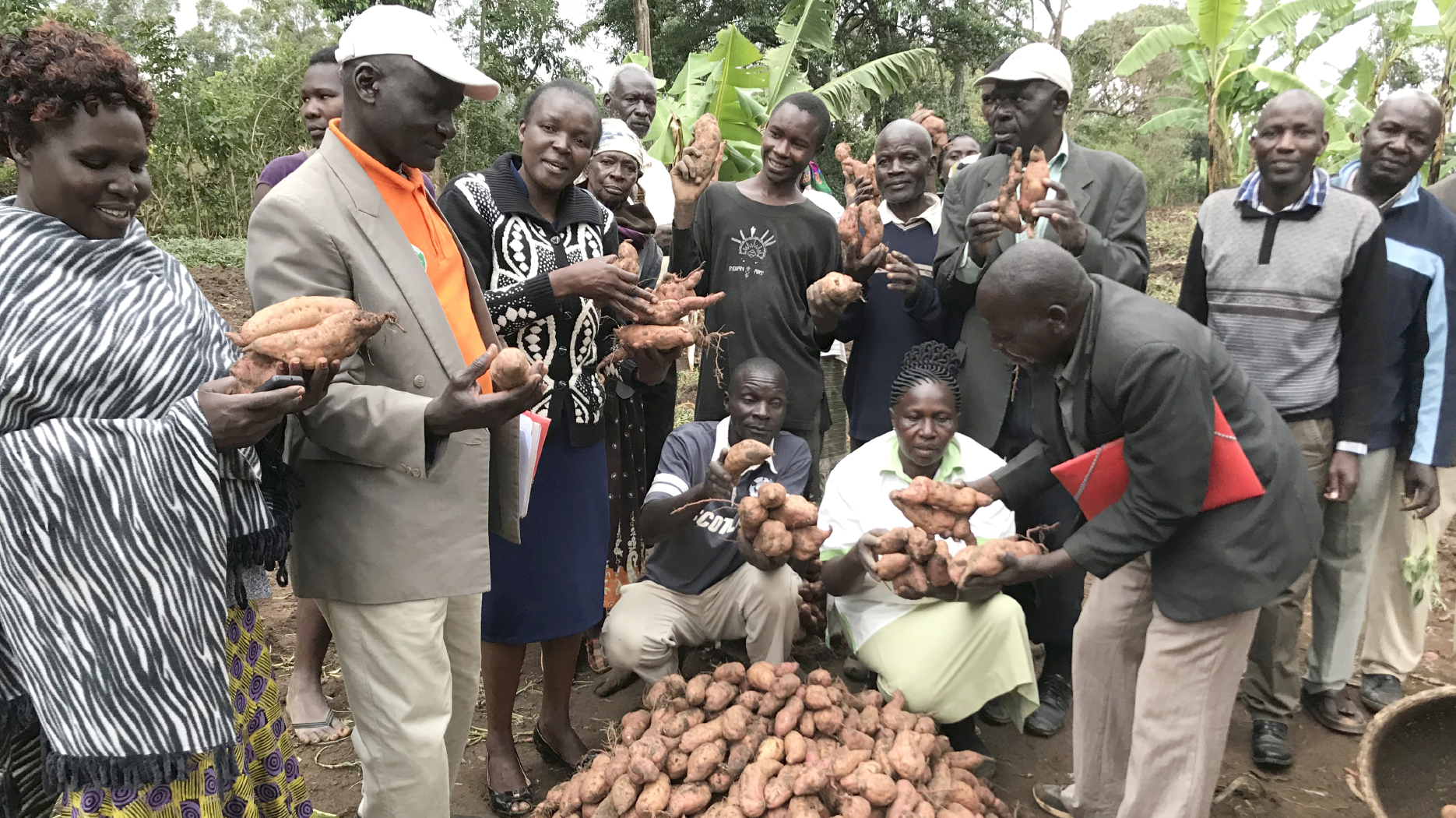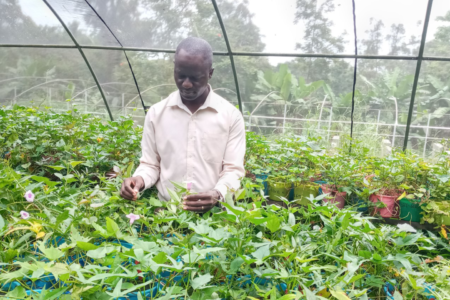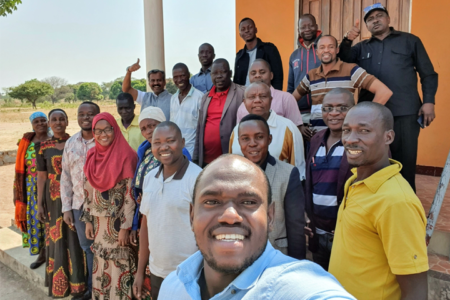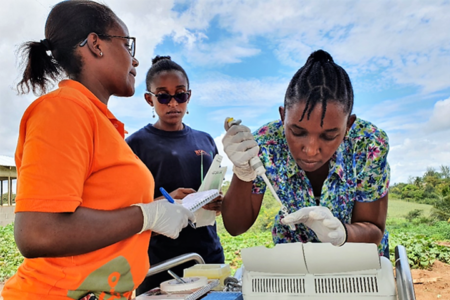

This Bill & Melinda Gates Foundation project aims to modernize Africa’s current systems for sweetpotato breeding and early generation seed production. The resulting improved varieties and their rapid dissemination and adoption will provide a strong foundation for better nutrition and diversified diets among rural and urban households across the continent.

Background
The food security and nutritional benefits of sweetpotato are being increasingly recognized throughout sub-Saharan Africa. In addition to providing a relatively high energy output and having a short cropping cycle, orangefleshed sweetpotato (OFSP) is rich in iron and vitamin A, nutrients that are essential for healthy growth in children. But despite substantial progress in breeding improved sweetpotato in recent years, significant obstacles prevent realizing the full impact and positive benefits that could be attained. Constraints include limited knowledge of the crop’s genetic make-up, sub-optimal levels of resistance to major biotic stresses, a need for researchers to improve understanding of the key traits affecting consumer acceptance, such as texture and cooking quality, and the
lack of seed systems capable of supporting the accelerated dissemination and adoption of new varieties.
The Sweetpotato Genetic Advances and Innovative Seed Systems (SweetGAINS) project is an ambitious three-year initiative designed to modernize sweetpotato breeding in Africa. It seeks to improve breeding operations and methods, ensure integration between breeding outputs and early generation seed availability, and form a strong and dynamic community of practice for sharing of knowledge and experiences.
The project builds on previous sweetpotato breeding achievements, which include:
- The formation of a network of researchers including from several national agricultural research institutes in Africa;
- Using accelerated breeding schemes to release significant numbers of improved varieties of sweetpotato since 2009.
- Genome sequencing, and significant progress in breeding for high-iron levels;
- Development of proof-of-concept that hybrid breeding schemes can revolutionize sweetpotato breeding. Genetic gains (increased yields) that took breeders 36 years, can now be achieved in 5 years using improved conventional breeding techniques. Average productivity rates recorded by farmers participating in the earlier CIP intervention – the Sweetpotato Action for Security and Health in Africa project – rose from 10.9 to 18.5 tons/ha under rainfed conditions.
- Establishment of parental populations; and
- Formulation of business plans for early generation seed development in national agricultural research systems.
This project is aligned with the ‘scaling up nutrition’movement, which encompasses commitment to delivering more nutritious food in all major sweetpotato-producing countries in sub-Saharan Africa
Objectives
- To increase access to improved sweetpotato varieties and enhance seed delivery systems through streamlined, gender-responsive, and well-managed sweetpotato breeding programs across Africa.
In achieving this goal, SweetGAINS will not only meet the needs of rural and urban consumers for more affordable, healthy food, but will also transform the lives of small-scale farming families by providing improved, high-yielding, and nutritious sweetpotato varieties.
Approach
The first priority is to form two sub-regional teams: one in Mozambique (covering southern Africa), the other in Uganda (for East and Central Africa). These teams will modernize sweetpotato breeding by developing profiles, performing crossings, and conducting multi-location trials. Secondly, SweetGAINS emphasizes cross-team learning to increase the speed of genetic gain and dissemination of new varieties. Establishment of a community of practice to integrate genetic improvement and seed research activities will drive shared learning and maximize efficiencies. Thirdly, the project will adopt a gender-responsive strategy, addressing male and female producers, consumers, and agro-processors equally.
Lastly, SweetGAINS recognizes the importance of taste, texture preferences, and other characteristics associated with culinary quality in varietal development. This focus marks substantial progress from earlier approaches, which focused on combining high vitamin A levels with tolerance to key biotic and abiotic constraints. SweetGAINS will work closely with the Kenya Plant Health Inspectorate Service, the regional germplasm hub, to ensure all African countries have access to quality, disease-free planting materials.
Expected outcomes
Adopting a gender-responsive, demand-driven approach to sweetpotato breeding and seed systems, SweetGAINS plans to deliver improved nutrition and diversified diets for both urban and rural populations. At both national and regional levels, the project will further strengthen sweetpotato breeding efforts in Africa to develop nutritious and highly productive varieties. With the incorporation of farmer- and consumer-preferred traits, and development of effective seed delivery systems, these varieties will replace less productive ones and achieve higher adoption rates among smallholders. Smallscale farmers will therefore have better access to new orange-fleshed sweetpotato and improved traditional varieties. Urban institutional consumers, including schools and hospitals, will be able to obtain a more reliable supply of nutritious sweetpotato at lower prices.
The project will establish modern, market-led sweetpotato breeding efforts through two sub-regional platforms working with at least four national agricultural research institution partners by 2022. SweetGAINS will improve breeding efficiency, reduce breeding cycle length, and enhance genetic gains. The resulting sustainable, inclusive seed systems will be able to deliver affordable, quality seed of market-preferred varieties in specific geographies by 2022, ready for wider adaptation and adoption.
Contact
Hugo Campos
CIP, Peru
h.campos@cgiar.org
Thanks to our donors









